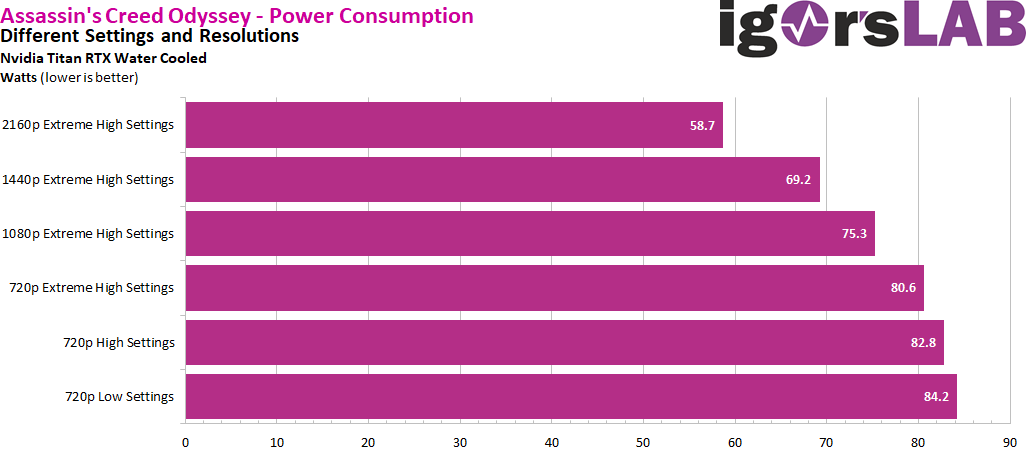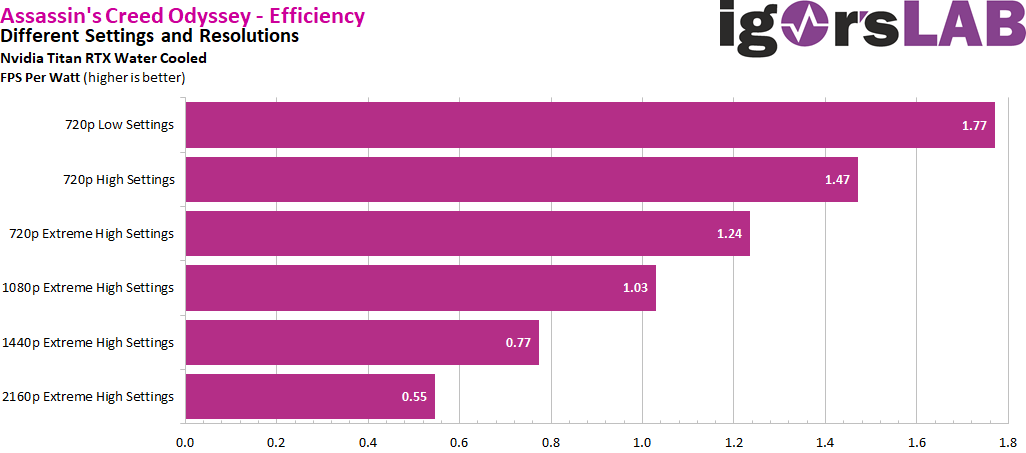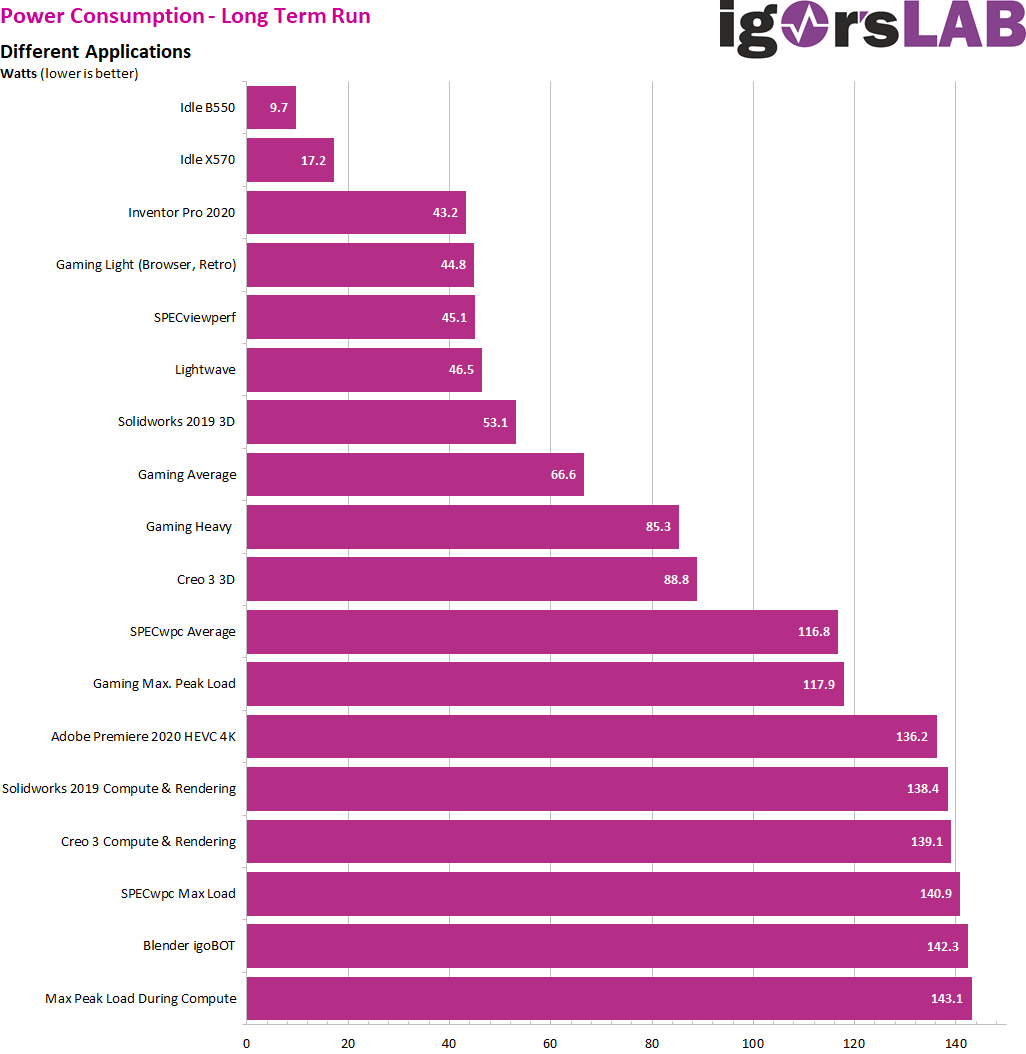For simplicity, the power consumption values in this case refer to the available power as the product of the sum of all currents measured at the drains of the power stages and the voltage delivered, thus most closely representing the so-called package power from CPU cores, the SoC values and various losses. However, it is below the values measured on the EPS feeds.
Scaling over all cores with different loads
Let’s come back to gaming, despite the focus on the productive area. If you put the average values of the power consumption on a bar, you can see that the power consumption decreases with the shift of the workload towards the GPU. Only the power consumption and the achieved FPS are also reduced. Now, you put that together and…

…if you convert this to FPS per watt, the 720p variant is more than three times as efficient! with increasing GPU load, the power consumption decreases significantly, but the “efficiency” decreases as well. But this effect actually affects all CPUs – more or less and it also occupies the “background noise” that such a CPU always produces on the power supply.

Power consumption from no load to full load
In idle I noticed a certain paradox, because the CPU does not clock down to 2.1 GHz as usual, but only to 2.2 GHz. So even in idle I had the 100 MHz more, for whatever reason. To what extent AGESA is to blame could not be determined exactly in the short time available, only it has no influence on the power consumption anyway. The paradox is somewhere else. With a Gigabyte B550 Aorus Master the measured value for the CPU was under 10 watts in places and only jumped to about 20 watts. On the MSI MEG X570 Godlike, on the other hand, these jumps were not so strong, but the power consumption of the CPU never dropped below 17 watts.
The following graphic shows very clearly why I have invested so much time in all the real-world applications. The first entries up to and including Solidworks 2019 3D only load 4 cores or less. The generated up to 53 watts are a good indication that you can also drive economically. However, you can already see here that the Ryzen 9 3900XT did not reinvent physics either. If the performance in applications increases due to a higher clock rate in the partial load range, then the power consumption also increases in an almost equal ratio.
Interestingly, the Ryzen 9 3900X is then 1-2 watts more economical than the Ryzen 9 3900X at maximum load on all cores, but a bit faster. This is all still in the low, single-digit percentage range, but it can be measured. The efficiency at full capacity is thus a tick better. it is surely wrong to attribute this to the voltage alone, as my experiment with the Ryzen 9 3950X and the XT-Mod proved.

It’s a pity that I couldn’t compare the different XT versions, but without the right CPU it just doesn’t work.































Kommentieren